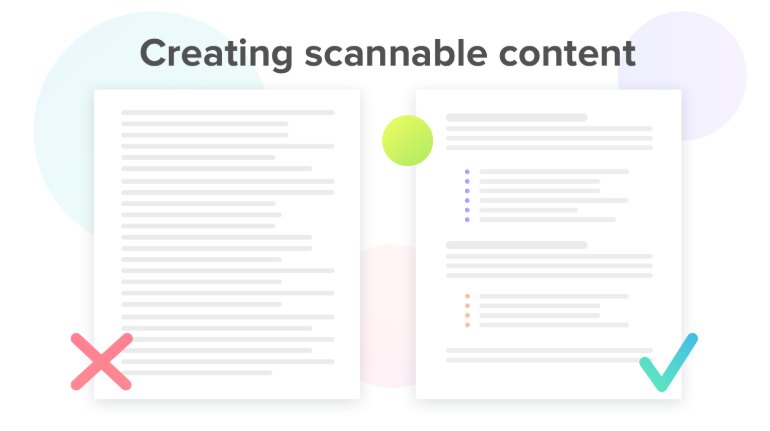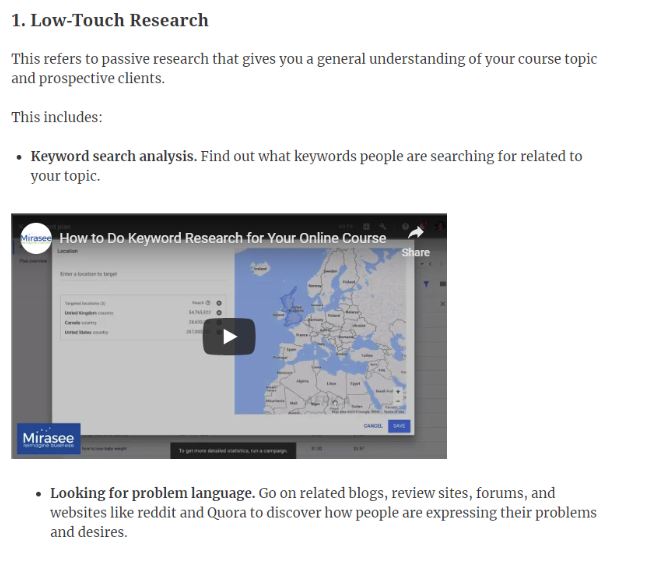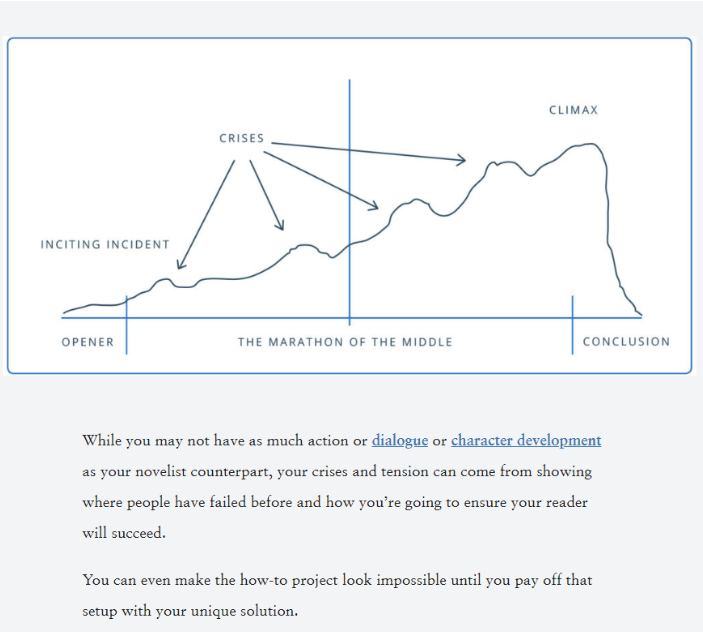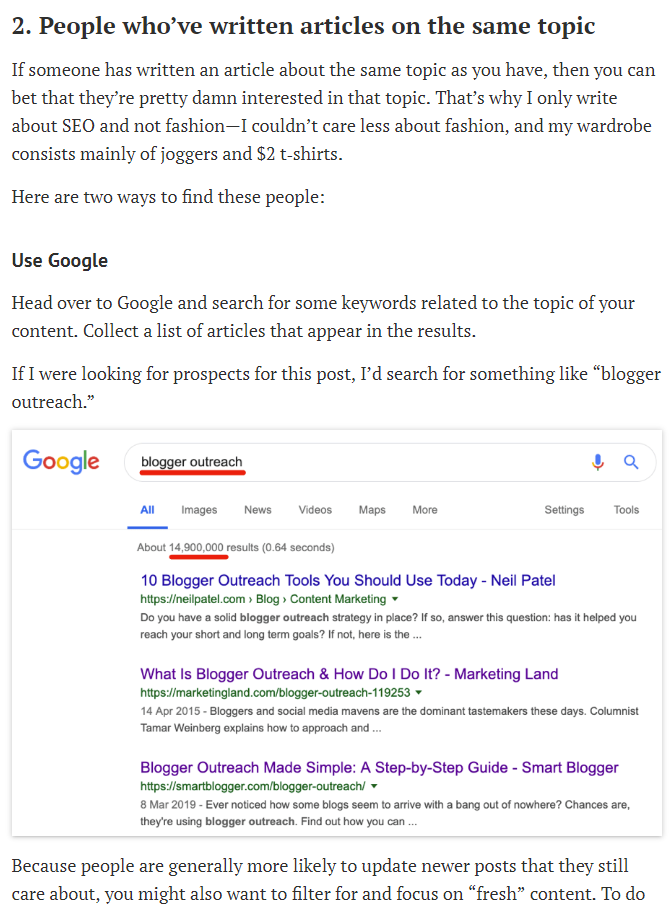If you had a dollar for every time someone told you to write compelling content, you’d be filthy rich.
It’s one of the most popular, undefined buzzwords in the blogging and content marketing community these days…
But what does it actually mean? How do you know when you’ve created compelling content?
These are questions worth asking because you HAVE to have compelling content these days if you want to rank in Google.
The bar for content has been raised, and it’s getting harder and harder to build those critical backlinks unless your content is incredible.
I’ve seen this firsthand with my clients over the past 5+ years.
Bloggers who write insanely valuable content always outrank those who write content that’s just okay.
And after running experiments with clients across multiple niches, I’ve begun to nail-down 5 key elements of compelling content.
Now, I want to be clear: these aren’t the only elements that make up compelling content.
But I’ve learned you absolutely can’t have compelling content without these 5 elements.
All-Compelling Content Is…
1. Clear
This seems obvious but it can’t be overlooked.
All compelling content has to be easy to digest and understand.
It doesn’t matter how compelling or unique your content is if your reader can’t understand it.
So, great content creators always make their content as clear as possible by:
- Making it scannable.
Long blocks of text are often overwhelming for readers (especially online). So, compelling content breaks up content into 2-3 line blocks and uses lots of lists like the picture below:
Source: https://seranking.com/blog/seo-for-blogs/
Pretty easy, right?
- Adding a ton of great examples and anecdotes.
One of the best ways to help your readers understand strategies, tactics, or theories you explain in your posts is by adding relevant examples and anecdotes.
And what better to explain why than with an example? 🙂
In their post on how to create an online course, Mirasee gives 10,000+ words of great content on course building based on everything they’ve learned helping entrepreneurs build courses over the years.
Throughout the entire post, they have:
- Embedded YouTube videos with tutorials they made
- Anecdotes showing the reader what they’ve learned from implementing the strategies they talk about
- Interviews with successful course creators
Their content is super dense and valuable, and they provide further explanation for anything that readers could have trouble understanding or visualizing.
And not only that, but they do so in a way that literally NO ONE else could do by providing interviews with their students in the post.
So when you’re creating content, think about ways you can further explain points based on your unique experience and insight.
These examples and anecdotes not only help your reader better understand your content, but they can position you as the go-to expert in your niche.
- Writing at a 3rd grade level (in terms of vocabulary).
Finally, you want to make sure you’re using words and phrases that everyone can understand.
Your blog isn’t the place to show off your vocabulary; it’s the place to communicate your ideas as effectively and succinctly as possible.
Describe ideas, tactics, and strategies as simply as possible (imagining that you’re trying to explain them to a child).
Don’t misunderstand, though: this doesn’t mean you need to have a condescending tone.
Your post needs to be inspiring and empowering (more on that in a minute) because of how well you communicate your ideas.
2. Tactical
Have you ever read a blog post with truly incredible ideas that offered little-to-no information on how to implement them?
It’s maddening.
It almost, at least in my mind, discredits everything they say because they haven’t proven they’ve tried implementing those ideas (let alone generated results with them).
That’s not compelling content…
Truly compelling content gives great ideas ALONG WITH great instructions for implementing them.
So, great content creators start blog posts by clearly explaining concepts, then go right into giving readers step-by-step processes (that they’ve actually tried) they can follow to implement those concepts.
Here’s a great example:
21-time New York Times best selling author, Jerry Jenkins, wrote a fantastic post on how to write a book that’s over 5,000 words.
In the post, Jerry gives you 20 steps to writing a book from his 40+ years of experience and 190+ books written.
In each step, he provides a concept, tells you why it’s important and how it can impact you as a writer, then gives his recommendations for implementing those concepts.
Take Step 5, for example, on constructing an outline:
Jerry begins the section by talking about the importance of having some sort of structure to follow when writing a book (even if you like writing whatever comes to your head).
His reasoning is because of what he calls the Marathon of the Middle—the middle part of the book between major plot points that’s so difficult to write.
And at the end of the section, he advises all writers to make an outline (even if it isn’t “traditional”). He recommends starting with something as simple as your title, chapter titles, and a few bullets for each section, then expanding on it as you go.
Jerry provides the concept AND unique instructions for implementing it based on his decades of experience.
That’s what tactical content looks like.
You may also like:
3. Empowering
Building off of the last point, all compelling content is empowering.
In other words, it’s so in-depth and helpful that it motivates readers to take action immediately.
Notice how I said empowering and not inspirational, though.
The goal isn’t acting like Tony Robbins in your content and getting readers to run through a brick wall—it’s giving them such helpful information that they can’t help but be excited about how it could impact their business.
The great part about this is you don’t really even have to consciously think about it. This comes naturally if your content is incredibly helpful.
So, you not only want to clearly explain concepts, strategies, tactics, and examples, but you also want to explain them in such a way that it makes your reader excited enough to take action immediately.
One of the best ways to do this is to show your excitement about the topic you’re writing on through your voice.
Tell your story about how you were just like the reader—frustrated because X wasn’t working or Y wasn’t how you wanted it—then tell them the story of how the insights you’re going to share in your content changed everything for you.
Talk about specific things you were feeling.
Talk about specific scenarios and times you thought it was a lost cause.
Then tell the story of your transformation and show the reader that the same thing can happen for them.
4. Unique
Over 4 million blog posts are published every single day.
That’s a whole lotta blog posts…
But the unfortunate truth is: most of them don’t generate any traffic.
And one of the biggest reasons, based on my observations having been in the industry for 5+ years, is because 99% of it isn’t unique.
Most of these blog posts are simply re-written versions of the same things we’ve been reading for years.
You know what I’m talking about…
Head to some of the most popular online publications out there and read some of their marketing articles.
You’ll get advice like:
- Build a social media following
- Find your target customer
- Focus on your ONE reader
- Produce content on multiple channels
- And the list goes on and on
None of this stuff is wrong or inherently bad, but everyone’s heard this stuff for years.
Today, people crave unique content from experts.
What does unique content actually look like?
If I wanted to write a generic blog post, I might say, “Just be yourself!” 🙂
That is NOT what I’m going to tell you.
What I am going to tell you is that creating unique, one-of-a-kind content requires you to have experience with the topic you’re writing about.
The secret is putting your own spin, your own experience, and your own insight into topics people are already talking about.
And to do that well, you can’t just read a few blog posts on a similar topic and write stuff.
You need to run experiments.
You need to prove or disprove advice from other experts.
And you need to immerse yourself in your field.
People don’t want to read content about why they need to write 1,000+ word content to rank in Google; they want to read content about all the tests you’ve run with content of varying lengths and what you learned during the process.
They don’t want to read content about why they need to create a customer avatar for their marketing campaigns; they want to read content about what you’ve learned about creating customer avatars from running 10 marketing campaigns for different clients.
And they don’t want to read content about how to use the Skyscraper technique to build links (since it’s so well known at this point); they want to read content about how you sent 1,000 outreach emails with 5 different link building strategies and what kind of results you saw.
People want to read about your unique insights and experience. Compelling content gives that to them.
5. A Foot Wide and a Mile Deep
The final element I’ve found in all compelling content is that it’s unbelievably in depth on a specific topic.
In other words, it’s a foot wide and a mile deep.
It takes a specific topic like eCommerce link building and provides the reader with everything they’d possibly need to know about it.
It’d give the best information possible on every:
- Tactic
- Overall strategy
- Outreach template
- Consideration
- Industry best practice
- And more
Ahref’s blog post on blogger outreach is a great example of content that’s a foot wide and a mile deep.
Blogger outreach is a very specific topic that’s a subtopic of SEO, which is a subtopic of online marketing, which is a subtopic of marketing.
There’s plenty that can be said about it, but it’s somewhat narrow compared to SEO or online marketing.
That makes it eligible for the “foot wide” label.
The Ahrefs post is insanely long and filled with tutorials, examples, screenshots, and anecdotes. It covers just about everything you need to know about blogger outreach—thus making it eligible for the “mile deep” label.
The important takeaway here is this:
You need to focus your content on topics that are big enough to write thousands of words on but narrow enough to be able to include everything someone needs to know about the topic.
Also, read:
- How to Get Great Backlinks for those New to Content Marketing
- Content Marketing In 2019 | Why Just Publishing Your Post Is NOT Enough?
Why?
Two reasons:
- Going back to the importance of tactical content, you want to give your readers a start-to-finish, all-inclusive guide to doing something. You want them to leave your site with a plan they’re excited to implement. You can’t do this if you write on a topic as broad as “marketing”.
- You want to be able to target keywords with low enough competition for your site to rank for. A more specific keyword like “blogger outreach best practices”, for example, will be much easier to rank for than “marketing”. I’m gonna go out on a limb and say neither of us will ever rank for the keyword “marketing”.
Going a foot wide and a mile deep with your content helps you satisfy all the other elements of compelling content we’ve gone over.
Compelling Content = Crazy Organic Traffic
There are tons of different factors that determine how well your content, and site in general, ranks in Google.
We both know that.
But you can’t satisfy 90% of those factors without compelling content.
You can’t:
- Get links
- Get shares
- Get guest posts
- Or even build an audience
So, look to incorporate these elements in your content and strive to make every post you create not only compelling but the best resource on the internet for your target keyword.
You’ll be surprised at how much more organic traffic you’ll start generating. 🙂







